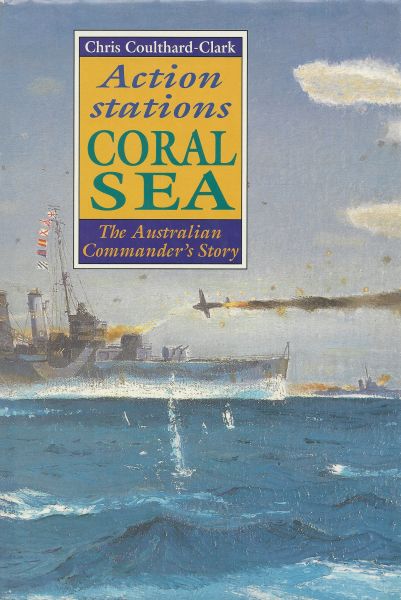The story of the Battle of the Coral Sea and the events leading up to it. pp. xvii, 157 illusts (name blacked out on prelim.) #0720Following the Japanese entry into the war, Crace became commander of the Allied naval squadron, Anzac Force, in February 1942. During operations in New Guinea waters with a carrier task force of the United States Navy, he was dissatisfied with the minor supporting role given to his ships. In April command arrangements in the Pacific were reorganised and Crace’s squadron was renamed Task Force 44, but, despite his seniority, he was made subordinate to the US Navy tactical commander.On 1 May 1942 Crace’s force sailed from Sydney to join two US Navy carrier groups that were deployed to the Coral Sea in anticipation of a major Japanese move southwards. His force consisting of the heavy cruiser HMAS Australia (II), in which Crace was embarked, the heavy cruiser USS Chicago, the light cruiser HMAS Hobart and three US destroyers. His force was detached on 7 May to intercept enemy troop ships heading for Port Moresby. Lacking air cover, it came under heavy enemy attack and Australia narrowly escaped being hit on several occasions.Crace received no further orders and knew little of the crucial carrier battle which was fought next day, east of his position. He withdrew on 10 May when fuel was running low and it was obvious that the enemy’s advance had been checked and the Port Moresby invasion force had turned back. The battle of the Coral Sea marked the end of Japanese expansion in South Pacific waters.
Action Stations Coral Sea: The Australian Commander’s Story
$35.00
Sold Out
Additional Information
| Author | Chris Coulthard-Clark |
|---|---|
| Publisher | Allen & Unwin, Australia |
| Year Published | 1991 |
| Binding Type | Hardcover in Dustjacket |
|---|
